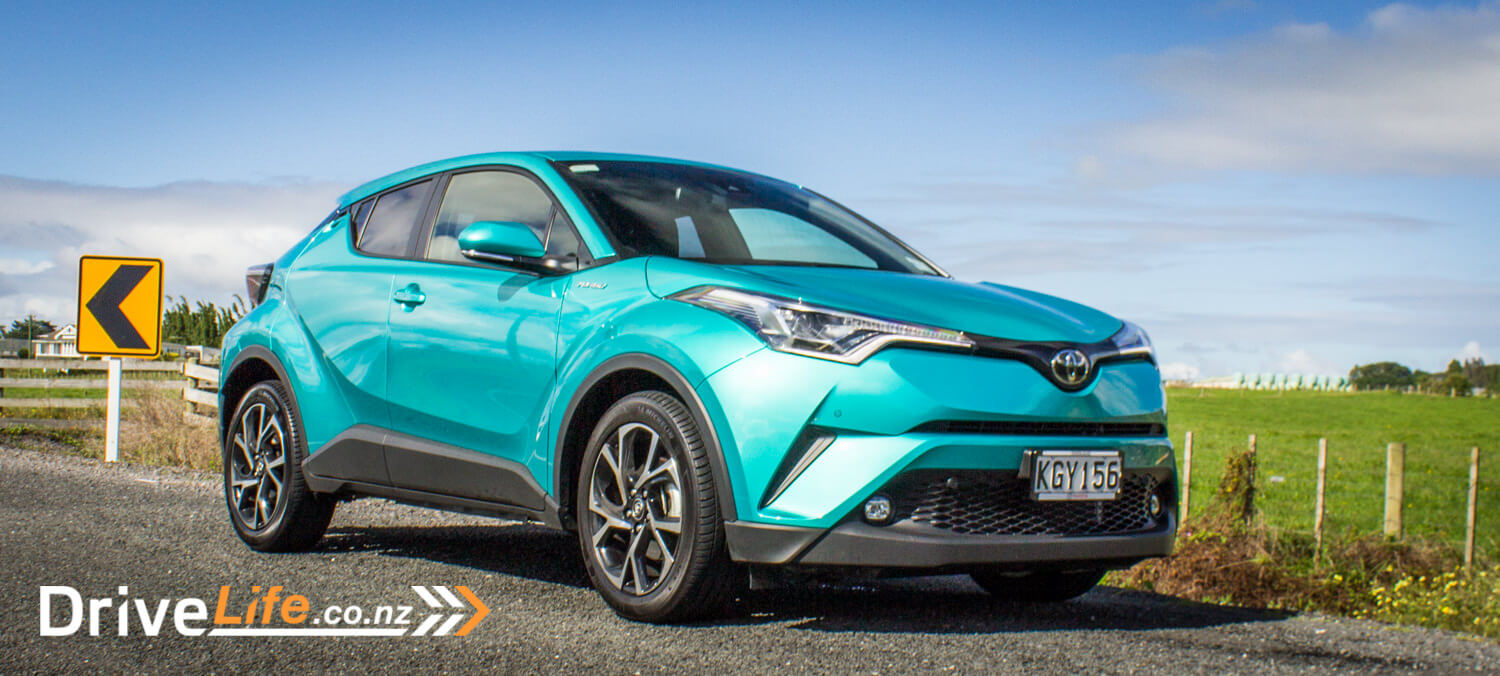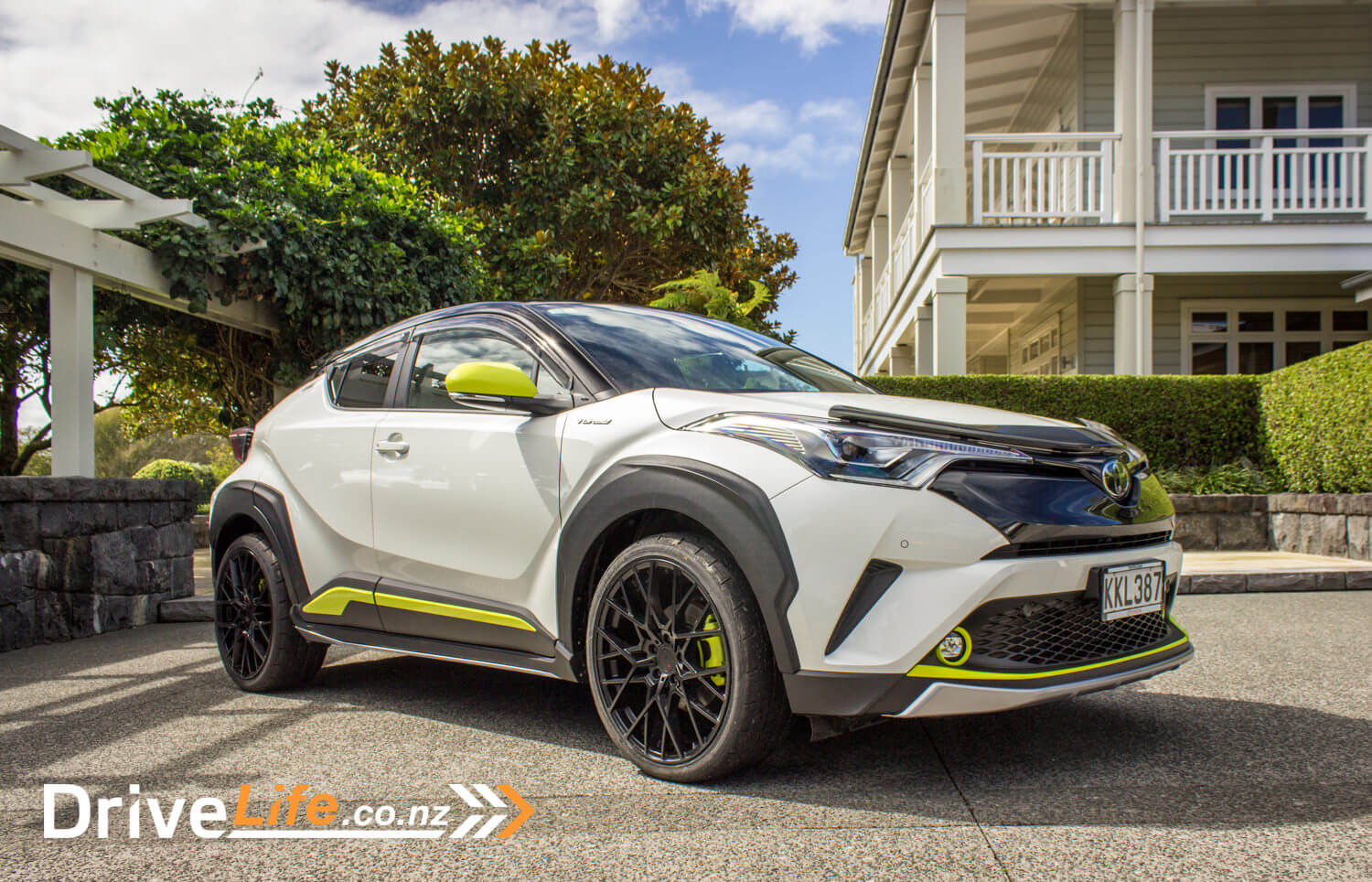In early April, Drive Life was invited by Toyota to the launch of their new compact SUV, the C-HR. This was one launch I was keen on – I had seen the initial press release sketches of the car and it looked simply stunning. Would the in-the-flesh design look just as good? I was about to find out.
The C-HR would slot in below the RAV4, giving Toyota six SUV models for buyers to choose from.
A bunch of motoring journos met at the Toyota dealer by Auckland Airport, and got taken to ‘our’ C-HRs. Did they look as good? Pretty much. Some design details have been lost since the initial sketches and press release pics, but all in all this is an SUV that will stand out among the large selection of other compact SUVs in this segment like the HR-V, Vitara and CX-3.
After a short driver’s briefing it was 2 to a car, and off we went, our first car finished a stunning teal green.
Our initial stop was at Manukau Heads’ Lighthouse, which I have never been to before. About a 30 kilometre drive, I let the other motoring journo with me drive first.
This gave me a chance to observe from the inside the C-HR before driving it. First impressions? Smooth, quiet, refined.
I like the checkered pattern on the doors. While it is a hard plastic, it breaks up the door panel nicely. There is a 7” touchscreen top and centre, so I had a play with that while my driver drove on. Easy to use, with built-in SatNav. I see there’s an electric park brake, and at last Toyota have put a ‘brake hold’ system in a car. This makes life easier and safer when stopped for long periods.
The inside does feel a little dark to me – aided by the black headlining and pillars; everything on the inside is black.
While overall the car is very quiet – especially the engine – coarse chip seal does bring a little road noise. There is a little wind noise too, but overall NVH is top of the class.

The seat felt comfy for me, and my driver – who is much taller and heavier than I – said the same. In fact by the end of the day, the seats were still a highlight.
We changed over midway to the lighthouse, so I get to see if this car went as well as it looked. The C-HR is the first Toyota in New Zealand to be fitted with the all-new 1.2-litre, four-cylinder turbo petrol motor. Does it go well? Yes. While it’s fitted with a CVT (no manual option) it doesn’t seem to behave like other CVTs, in a good way. Flicking it into Sports mode will see it change to a 7-speed stepped automatic. I tried this a few times, and it did seem to behave more like a normal automatic.
So performance-wise, very good. I was surprised with the linear acceleration of the car, no sudden surges, and during lunch it was explained that maximum torque is at 1,500rpm.
Handling too felt excellent on our short drive. I took the car on the very windy road to the lighthouse, and it gripped and handled well, sitting relatively flat, even on tight bends. Watching other C-HRs from behind showed a nicely setup suspension. By the end of the day everyone was impressed with the ride/handling compromise.
Cruise control? Adaptive, but controlled by a stalk, as is Toyota’s way of doing it. Not ideal.
After arriving at the lighthouse, it was time to take in some of the design features of the car. LED sequential indicators at the front? Very nice. There’s a ‘Toyota C-HR’ imprinted in the park light, just like a Prado. Opening the boot sees a reasonable amount of room (318 litres), along with a few cubby holes for your stuff under the cover next to the space saver spare.
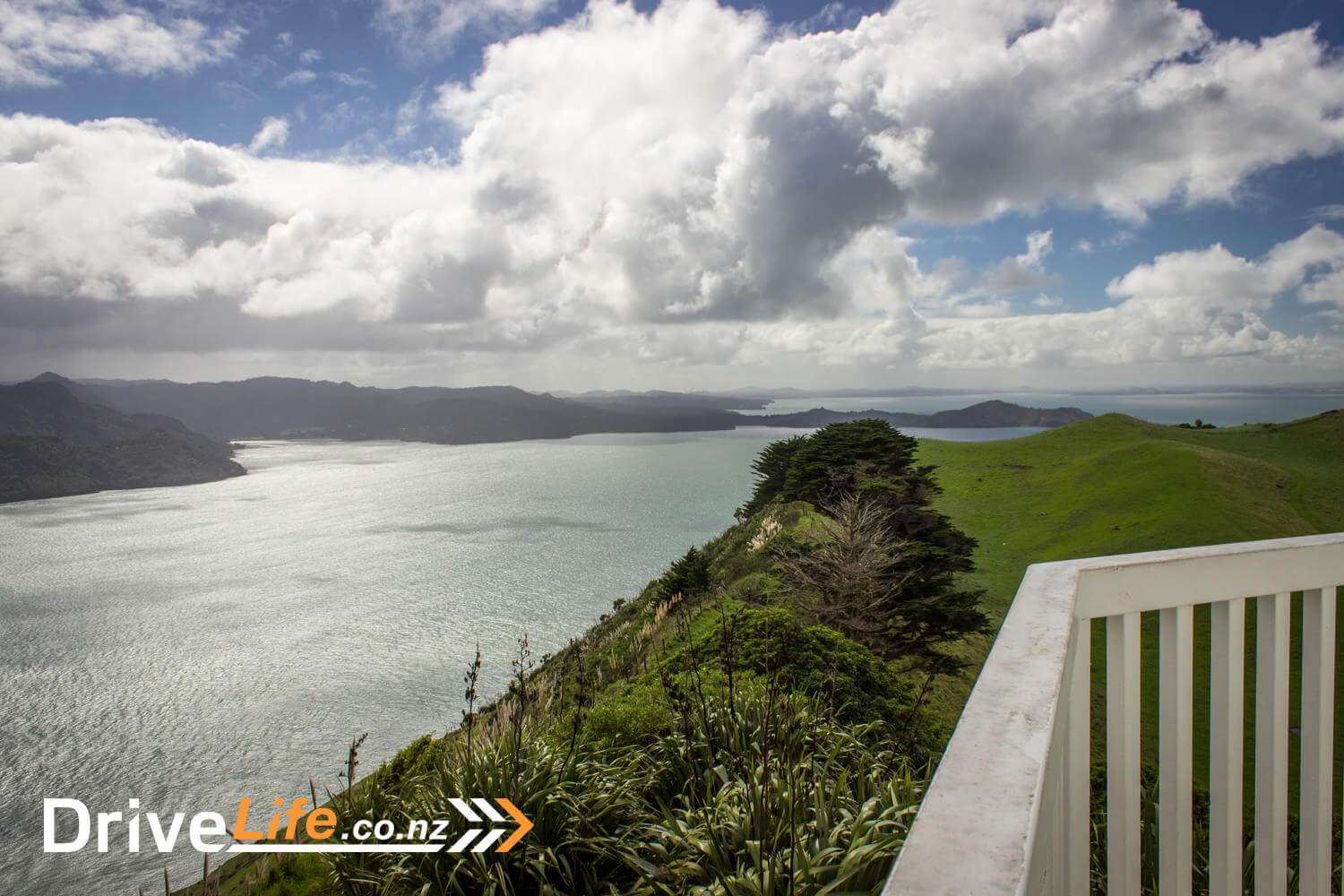
The rear door handles, while initially looking a bit gimmicky, work well and enable some nice free flowing lines down the side of the car.

The LED taillights seem massive, and they are – they look like the new Civic to me, but they aren’t unattractive at all. Rear legroom looks a little tight, probably on average for the class.
On leaving the lighthouse, we swapped to a metallic red car, and I took up shotgun again to the next driver-change point. My driver gave it a good push around the windies on the way back, and I’ve got to say, this is a very capable car – the chassis is excellent, the brakes too and the ride is superb.

We motored on until the next stop to change to me driving again. I found myself quickly comparing it to the new FWD Peugeot 2008, which I have on test right now. The motor in the 2008 is a 1.2 turbo as well, but three cylinders. How do they compare? The 2008 feels a lot more eager than the C-HR in performance, but the C-HR is far more refined in NVH. The C-HR puts out 85Kw/185Nm, and the 2008 is 81/205, so you can see they are very close. Even the chassis in both cars is similar in behaviour.
I felt enough confidence in the car to test it out, so at a reasonable speed I braked hard, mid-corner. No drama at all, no massive understeer. Just total control. I like the handling on this car!
The next top was Te Hihi Estate in Karaka for lunch.
Outside waiting for us is yet another C-HR, but this one has been decked out with almost every accessory that is available for the car – and there are 55 of them. Got to say, it looks pretty darn sporty. There’s no mechanical or other accessories – everything is purely cosmetic, but it did transform what is already a good-looking car into something else.
During lunch, Toyota gave us some info on the C-HR. C-HR apparently can stands for both Compact High Rider or Cross Hatch Runabout. So there you go. We were then shown some graphs of sales of the SUV segment, and were told that in just over 4 years, the compact SUV has gone from almost nothing to 16% of all SUV sales – and rising. This is a market segment within SUV sales to watch.
Not only that, but some 96% of compact SUVs sold are automatic – which is why there is no manual option for the C-HR. They also mention that overall, 80% of compact SUVS sold are 2WD. There is an AWD C-HR available, with just a $2K premium over the FWD version. However, Toyota still expects that 75% of C-HR sales will be 2WD.
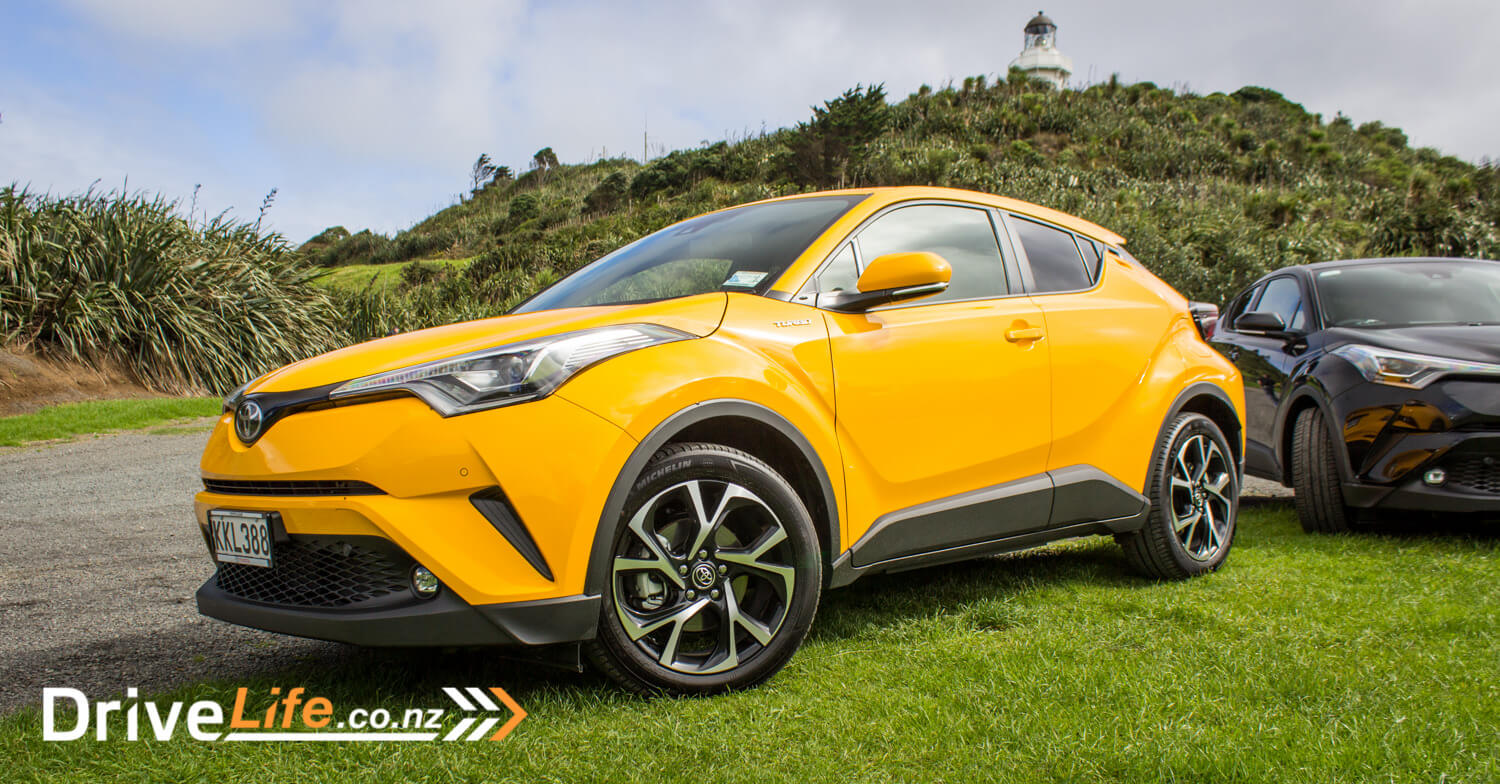
I was interested to find out about where the customers would be coming from, for the C-HR. Would they leave the RAV4 and go for a smaller SUV? According to Toyota, they are targeting new buyers for this model – in other words, stealing them away from the HR-V, Vitara, ASX et al.
They also expect to sell at least 850 C-HRs in the rest of 2017, and 1,000 next year; judging by the ability of this car and its looks, I don’t see that being difficult at all.
After driving the C-HR and seeing how well the chassis coped with a tight, winding road, it was no surprise when Toyota told us the suspension was honed on European roads. This has translated well to New Zealand roads.
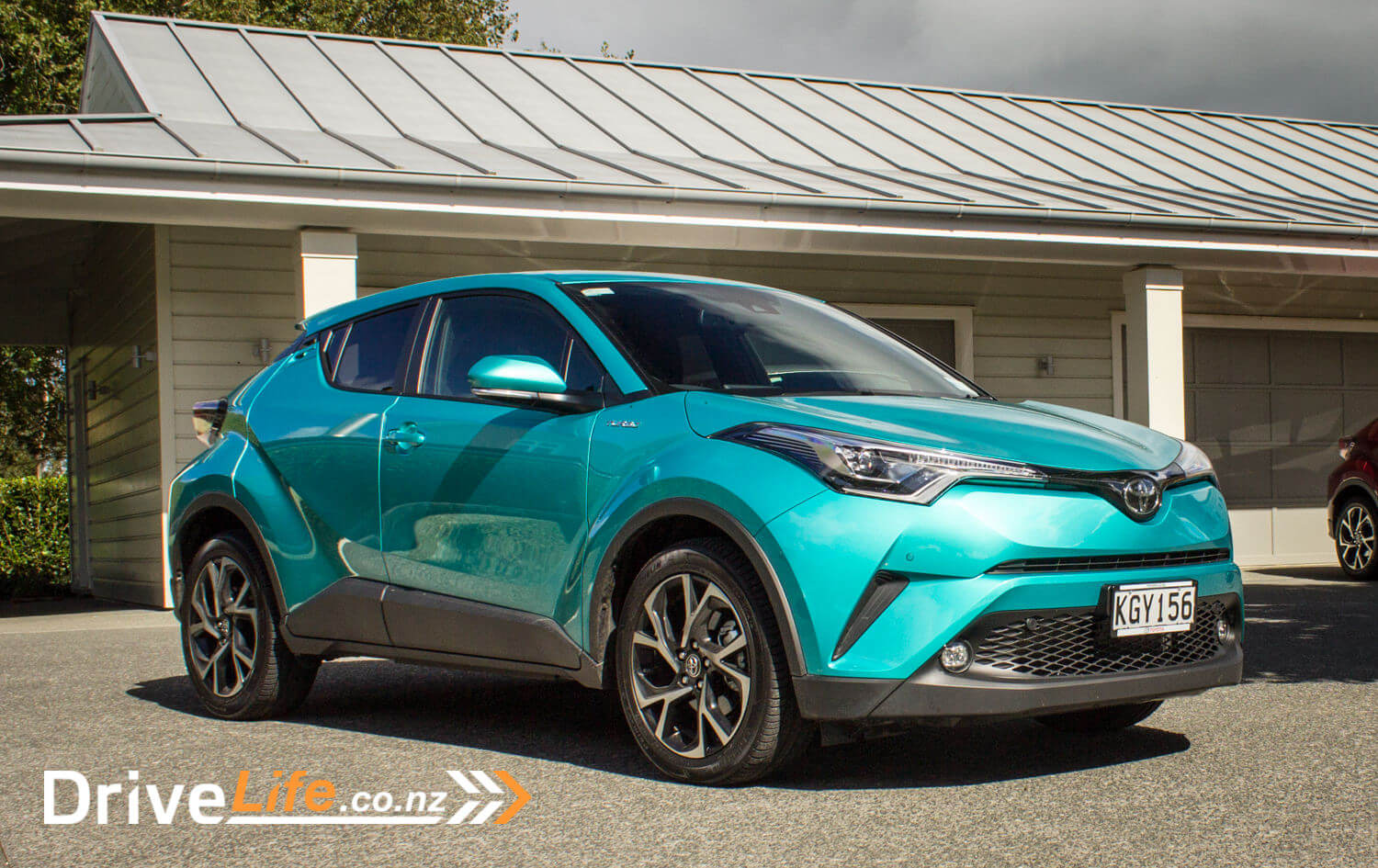
The all new chassis is based on Toyota’s TNGA system: Toyota Next Generation Architecture, and the car is slightly longer and wider than a Corolla.
Both C-HR models are fitted with Toyota’s Safety Sense system; for you and I this means automatic high-beams, pre-crash systems, adaptive cruise control and active lane departure. The C-HR also has Rear Cross Traffic Alert and Blind Spot Monitoring. Its ANCAP safety rating is 5 stars.
After lunch I nabbed an AWD version, as we headed back towards the airport. Did it feel any different? Not at all, but it would take much worse road conditions to show that. The AWD weighs just 70Kg more than the 2WD and for just a $2K premium, I would be surprised if Toyota didn’t sell more than the 25% they are expecting to.
So all in all, first impressions of the C-HR? Stunning looks, superb chassis, excellent NVH, very good performance. Toyota may be on to a winner here.
2WD C-HR $37,990
AWD C-HR $39,990


